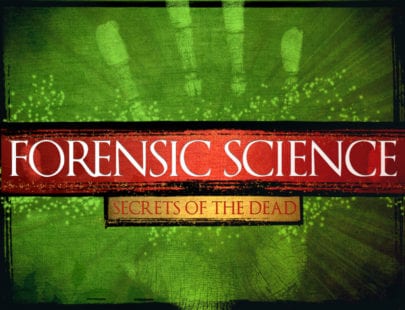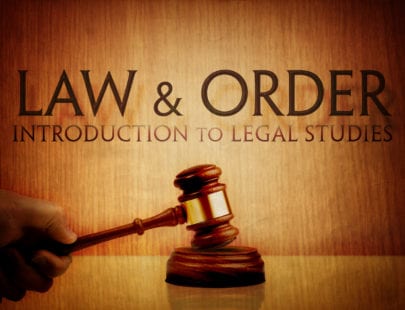
Criminology: Inside the Criminal Mind
Why do certain people commit horrible acts? Can we ever begin to understand their reasoning and motivation? Perhaps. The mental state of a criminal can be affected by many different aspects of life: psychological, biological, sociological, all of which have different perspectives and influences. Investigate not only how these variables affect the criminal mind but also how crimes are investigated and handled in the criminal justice system.
Units at a Glance
Unit 1: The World of Criminology
In this unit, you will be introduced to the field of criminology. We will discuss what crime is and how it is related to deviance. We will also examine the similarities and differences between criminologists, criminalists, and criminal justice professionals. In addition, we will investigate the idea of criminal intent and the various defenses that might be used when a crime is committed. Finally, we will look at some of the research methods that are used in the field of criminology to help us better understand crime and criminals.
What will you learn in this unit?
- Learn what crime is and how it is related to deviance.
- Discuss what criminology is and how it relates to other disciplines.
- Investigate legitimate reasons why a crime might be excused.
- Examine crime statistic sources and the issues with each.
- Look at some of the research methods that criminologists use to study crime.
Unit 2: Biological and Psychological Theories of Crime
In this unit, we will consider biological and psychological explanations for crime. In doing so, we will look at phrenology and somatotyping. We will consider how pollution, hormones, and what we eat may have an effect on whether an individual commits a crime. We will discuss some of the psychological explanations of crime such as psychoanalytic theory, modeling theory, and self-control theory. Finally, we will examine the legal definition of insanity and the use of psychological profiling in solving crimes.
What will you learn in this unit?
- Learn about early biological explanations of crime such as phrenology.
- Discuss chemical and hormonal theories of crime.
- Look at psychoanalytic theories of crime.
- Examine modeling and self-control theories.
- Investigate the legal definitions of insanity and how psychological profiling is used to solve crimes.
Unit 3: Labeling, Conflict, Environmental, and Radical Theories
In this unit, we will turn from the biological and psychological explanations for crime discussed in the previous unit to looking at how the environment and social conditions affect crime. In doing so, we will discuss theories such as social disorganization theory, strain theory, conflict theories, and radical criminology. We will examine how both negative labeling, inequality, and the physical environment influence crime.
What will you learn in this unit?
- Learn what social structure and social conditions are and how they relate to crime.
- Examine how social transition and rapid change can result in crime.
- Discuss how individuals may adapt to cultural goals in a way that leads to crime.
- Investigate how physical conditions affect crimes.
- Discuss the roles that inequality and power have in crime.
Unit 4: Violent Crimes and Crimes Against Property
In this unit, we will consider the categories of crime known as crimes against persons and crimes against property. We will learn about crimes against persons such as homicide, assault, and robbery. We will also discuss property crimes, such as larceny, burglary, and arson. With each of the crimes, we will examine insights that criminologists have gained in studying the crime and statistics of the crime for victims and offenders.
What will you learn in this unit?
- Learn about crimes against persons and crimes against property.
- Understand the different legal categories of homicide.
- Examine the different categories of thieves.
- Investigate the cost of crimes like larceny.
- Discuss the social conditions that factor into crimes such as burglary.
Unit 5: White-Collar Corporate and Public Order Crimes
In this unit, we will discuss white-collar crime, corporate crime, organized crime, and public order crime. In doing so, we will identify which crimes fall into each area and what the effect is on society and individuals. We will identify the differences between occupational and corporate crime. Finally, we will discuss some of the controversies and debates in reducing organized and public order crimes.
What will you learn in this unit?
- Identify the differences between occupational and corporate crimes.
- Discuss the costs of white-collar and corporate crimes to society.
- Examine different types of corporate crimes.
- Discuss possible solutions for controlling organized crime.
- Investigate the controversies over public order crimes and their enforcement.
Unit 6: Criminal Case Process
In this unit, we will discuss the criminal case process. We will examine the goals of the criminal justice system, including deterring crime and punishing those who break the law. We will also discuss the stages of a criminal case, including entry into the system, prosecution, sentencing, corrections, and diversions. Finally, we will look at how the juvenile court process differs from the adult criminal case process.
What will you learn in this unit?
- Learn about the criminal justice system and what is included in the system.
- Discuss how the criminal justice system had its beginnings.
- Examine the goals of the criminal justice system.
- Investigate the various stages of the criminal case process.
- Look at how the juvenile criminal case process differs from the adult criminal case process.
Unit 7: Enforcing the Law and the Nature of Courts
In this unit, we will explore the process of enforcing the law and the court system. In doing so, we will look at the selection of police officers, the choices that they make in their role as a police officer, and the use of community policing. We will also consider the structure of the court system in the United States and what a typical trial looks like. Finally, we will examine the controversy over the death penalty and explore some of the reasons for and against this sentence.
What will you learn in this unit?
- Learn about the conflicting models toward crime and criminals in the criminal justice system.
- Discuss the factors that influence law enforcement decisions.
- Understand the U.S. court system, including state and federal courts.
- Examine what occurs in a typical criminal trial.
- Investigate the reasons for and against the death penalty and what research has shown about the death penalty.
Unit 8: Overview of Punishment and Correction
In this unit, we will consider the various punishments that are used in the correctional system. We will first examine institutional corrections, such as sentences to jail or prison. We will look at the different types of facilities and the history of the correctional system. We will also discuss the use of parole and its advantages and disadvantages to society. In addition, we will examine other forms of punishments, including probation and alternative sanctions. In doing so, we will discuss what is involved with these punishments and whether they are effective at keeping individuals from repeating their crimes.
What will you learn in this unit?
- Understand the different facilities used to hold and incarcerate offenders.
- Learn about the history of the correctional system.
- Examine the cost of correctional institutions to society.
- Discuss probation and why it is used.
- Examine alternative sanctions, such as house arrest and community service.
Required Materials
- No additional materials are required for this course.

